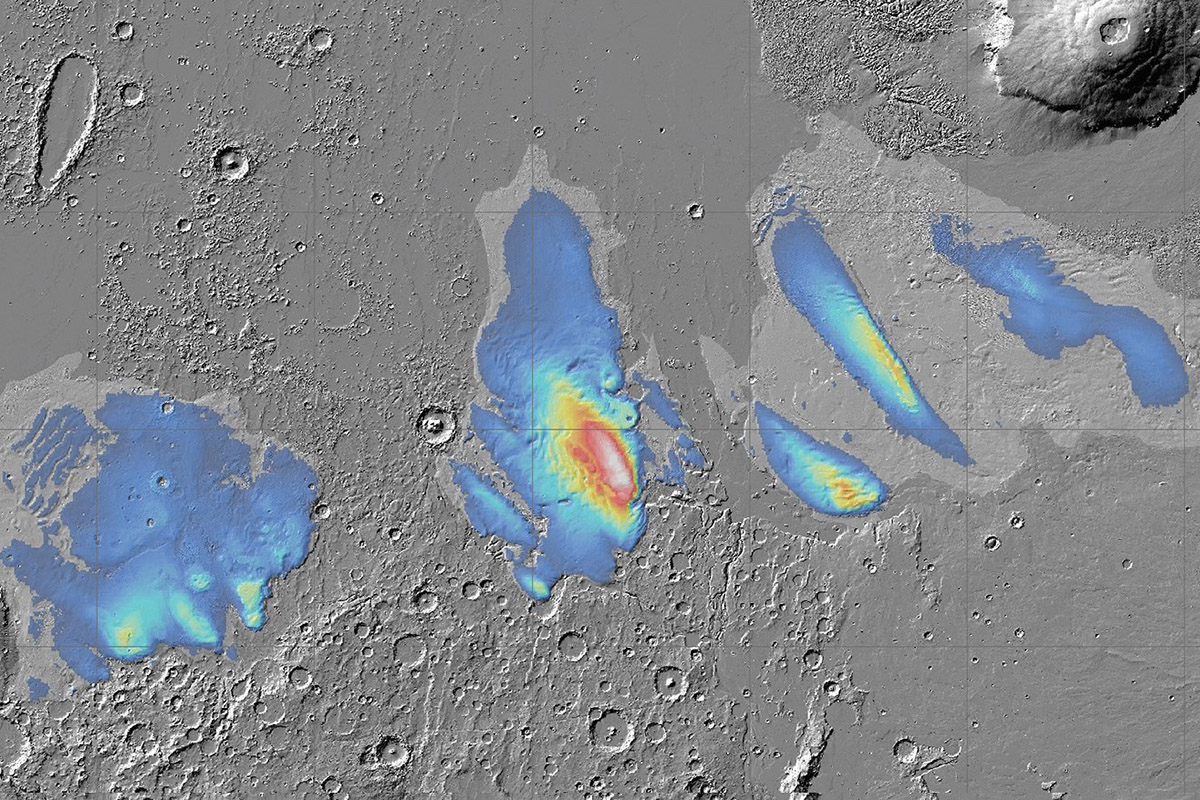Abundant Water Ice Found in Mars’ Medusae Fossae
25th Jan 2024
Recent findings from ESA’s Mars Express orbiter indicate that the Medusae Fossae Formation (MFF), a monumental deposit located on Mars, contains water ice in abundance. If the ice were to be melted, it would be sufficient to fill an ocean up to 8.8 feet deep and cover the entire planet.
Previously, scientists believed that the MFF might be primarily composed of volcanic ash. However, the latest data suggest that it is more likely to be made of water ice, considering that its geographical characteristics are similar to those spotted at the planet’s polar ice caps.
According to Tom Watters, a senior scientist at the Smithsonian Institution and the lead author of a new research paper issued in the journal Geophysical Research Letters, no other formerly liquid substance can match the electrical properties and layering of the deposit except for water ice. Moreover, no dry material seems to fit the profile either.
This recent finding is particularly intriguing because it is the biggest reserve of water ice discovered close to Mars’ equator. As a result, it presents a potential location for explorers to visit in the future.
Thick Layers of Ice and Dust
According to an ESA statement by Watters, the MFF has been studied again using the latest data from Mars Express’ MARSIS radar, revealing that the deposits are thicker than initially estimated, measuring up to 2.3 miles. The radar signals extracted from the MFF suggest the presence of layered ice, which is similar to the signals observed from Mars’ polar caps.
The land features on the formation’s surface, spanning hundreds of miles and several miles tall, are believed to have been shaped by wind. Although previous measurements in 2007 hinted that the area might contain water ice, researchers could not determine whether it was a massive accumulation of ash, sediment, or dust.
Andrea Cicchetti, a coauthor from the National Institute of Astrophysics in Italy, stated that if the MFF was just a massive pile of dust, it would have been compressed by its own weight, resulting in a denser structure than what was recently observed with MARSIS.
Hence, the researchers have concluded that the structure consists of layers of ice and dust. However, the formation’s ice deposits are stuck under several hundred feet of ash or dust, rendering it difficult for future Mars explorers to reach them.
Ultimately, despite these findings, many questions remain unresolved. According to Colin Wilson, Mars Express project scientist, if the massive deposits are confirmed to be water ice, it could transform the existing knowledge of Mars’ climate history.







Thank you for your comment! It will be visible on the site after moderation.